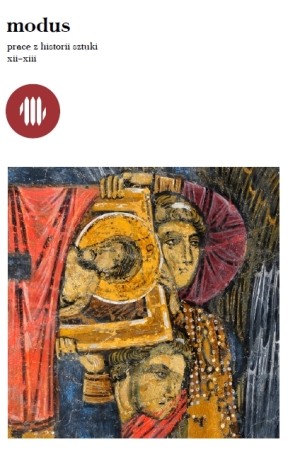Władza Spojrzenia - władza języka: Juliusza Starzyńskiego obraz sztuki i jej historii
The Power of the Gazę - the Power of the Language. Juliusz Starzyńskis Vision of Art and its History
Author(s): Marta LeśniakowskaSubject(s): Fine Arts / Performing Arts, Visual Arts, History of Art
Published by: Instytut Historii Sztuki Uniwersytetu Jagiellońskiego
Keywords: Juliusz Starzyński;art historiography;
Summary/Abstract: The paper analyses the scholarly activity of Juliusz Starzyński, a preeminent personality in Polish twentieth-century art history, and shows the role Starzyński had played in the institutional and theoretical functioning of the discipline. Starzyńskis scholarly and organisational activities exemplified the realities of the times of his life: in the communist period he included art in the theses of dogmatic Marxist ideology mixed with modernist utopiasj and while striving at realising a utopian, modernist vision of an institution based on the Orphic unity of arts, he had outlined the directions of art-historical research and formatted its organisational structures. The hermeneutics of his output is focused on the communist period, and an attempt has been madę at reconstructing the model of Starzyńskis approach to art history and the strategies of ‘using’ art history present in his concepts by means of specially programmed ‘new mernory’, as a part of the Peoples Republic of Poland doctrine of tradition management. On the basis of the Warsaw scholarly milieu, Starzyński had created in succession three of Polands most important institutions whose purpose was the research on the fine arts and which in fact embodied the Foucauldian power (before 1939 it was the Institute for the Promotion of the Arts; after the war: the State Art Institute and the Art Institute of the Polish Academy of Sciences). His professional activity was interrupted by the war, yet the dividing line that this fact had drawn between his ‘beforehand’ and afterward’ ideological attitudes was only superficial. In the authors opinion, these historiosophic projects were only superficially contrasting, as both of them belonged to the common area of Starzyńskis understanding of art and its presence in the social space as a function of the politics of history. The paper is based on a detailed hermeneutics of all of Starzyńskis published texts. It shows how Starzyńskis genetically modernist understanding of the function of art history as a codifier of knowledge, producer of a ‘knowledgeable beholder’ and its guardian, is only one of many cultural conventions created by the discourse, whose degree of mythologizing can only now be revealed.
Journal: Modus. Prace z historii sztuki
- Issue Year: 2013
- Issue No: 12-13
- Page Range: 27-52
- Page Count: 26
- Language: Polish

